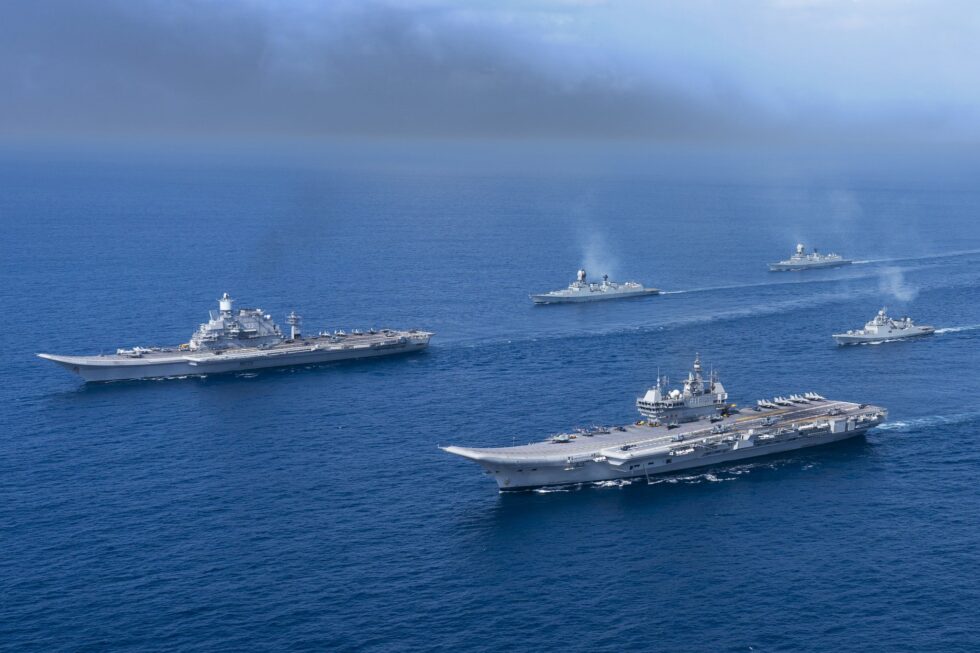
Highlights
-
- The Red Sea route troubles have necessitated usage of alternative trade corridors for countries
-
- The so-called Middle corridor, a predominantly rail route is gaining traction, connecting Central Asia and Europe
-
- Middle corridor is 4,250 kms of railway lines and just over 500 kms of sea corridors, stretching from China’s Pacific coast into Poland
-
- The corridor has a current total throughput capacity of 5.8 million tons of cargo annually and capacity can be increased to 10 million tons by 2030
-
- China has initiated much of the trade route through its Belt and road initiative and can bypass any US sanctions on trade
-
- India needs to speed up its linkages to corner a big share of trade through these routes to get geopolitical mileage and increase soft power
The Houthis have greatly upped the risk of the Red Sea route. But there are changes afoot with new fast-developing land corridors that allow trade to circumvent these risks, with the advantage of lower transit times.
Geopolitics is driving, and will drive, much of the dynamic of these trade routes, several of these initiated shrewdly by China as part of their Belt and Road Initiative (BRI). One of these, the so-called Middle Corridor, or the Trans-Caspian International Transport Route (TITR) has quietly been gaining much of the trade that used to traditionally go through the Red Sea. Coupled with the fast-developing International North South Corridor from Russia’s north to Iranian ports, these trade routes could well change some of the geopolitical alliances that drive Asia, negating many a US advantage in the region.
Together with their fast-developing spur lines, these land-based, predominantly rail routes not just offer advantages for Central Asia, but considerably enhance the geopolitical and geo-economic returns for Russia, Iran, and China. There are still some sections to be completed and much political wrangling will occur since its Iran, China and Russia that are inextricably entwined here, but the promise the route holds is definite. India, too, stands to gain much from the effective exploitation of the corridor with the links into Central Asia and Eastern Europe, via a routing through Iran’s Chahbahar port.
The Middle corridor
The TITR Association’s members include Azerbaijan, Georgia, Kazakhstan, Turkey, Ukraine, Poland, Romania, Bulgaria, Lithuania, Singapore, and China. The route comprises 4,250 kilometres of railway lines and just over 500 kilometres of sea corridors. It starts from China’s Pacific coast, provides backward links into Southeast Asia, runs through Kazakhstan, traverses the Caspian Sea, and via Azerbaijan goes further into Poland.
In the first 10 months of 2023, 2.26 billion tons of cargo traversed the route, surging 88 percent over the previous year. The corridor has a current total throughput capacity of 5.8 million tons of cargo annually and plans are afoot to increase capacity to 10 million tons by 2030.
In a report in November last year, the World Bank highlighted the promise of this routing when it pointed out that “a combination of investments and efficiency measures can reduce travel times along the corridor by half and triple trade flows by 2030.” The World Banks’s modelling predicted increased trade between Azerbaijan, Georgia, Kazakhstan, and Europe, with a 37 percent increase in trade between the three Central Asian countries and a 28 percent rise in trade between these countries and the EU by 2030. And this was before the Houthi attacks in the Red Sea commenced.
The Middle Corridor largely bypasses Russia, but the branches it offers and the links it provides through other developing corridors like the International North-South Corridor linking St. Petersburg in Russia to Iran’s Bandar Abbas and Chahbahar ports.
The China-Iran advantage
The advantages to China are undoubtedly high. Strategically, the Turkmenistan, Uzbekistan, and Kazakhstan links with quickly developing trade spurs through Iran not just lowers reliance on cargo traversing the Indian Ocean through the Malacca Straits but it offers much advantage as a route which the US has very little control over. China’s fast-burgeoning links into Central Asia, alongside its strong relationships with Tehran will provide it with a control over a trade route that offer vital geopolitical advantage, and deal with potential contingencies in the South China Sea and the Taiwan Straits.
For Iran, the link offers a land route into China, fast developing into its most vital trade partner, with a route that the US has little ability to exercise physical control over, besides traversing countries that have been at best lukewarm to the US sanctions over Iran.
China’s long-term gameplan is to allow much of its trade with Africa especially the critical minerals trade to traverse the Iran-China spur links to the Middle Corridor, with ports like Bandar Imam Khomeini in the Persian Gulf and Shahid Rajaie becoming vital trade points that China could exercise some control over. The link would greatly impede any US ability to exercise effective sanctions over Iran, besides limiting the possibility of any future sanctions over China, especially if it invades Taiwan.
China’s trade with Central Asia, meanwhile, was $89 billion in 2023. China is also holding out the promise that it will open its markets to Central Asian exporters and promising e-commerce. China’s investments are fast rising. An agreement was signed between China and Uzbekistan in May last year for a $6 billion investment into a 6 GW power plant. Joint production of China’s automobiles in Kazakhstan has begun, with an eye particularly on the Russian market. A new China-Kyrgyzstan-Uzbekistan railway is on the anvil that gives China unprecedented access to the region, and sidelines much of the advantages Russia hitherto enjoyed.
India’s dilemmas
For India the 7,200-kilometre INSTC is vital but problematic. The main western routing which traverses Azerbaijan by rail saw rail freight grow over 30 percent in 2023, with total freight traffic expected to reach 30 million tons annually over the next 5 years. The development of the route stalled with US sanctions over Russia, but work has commenced again following a $1.4 billion loan from Russia to Iran. Russia and Iran are working to connect the 164-kilometre Rasht-Astara line linking Rasht in Iran to Azerbaijan’s Astara via the port of Anzali by 2027. When the Rasht-Astara line is completed, transit time along this route will reduce the INSTC’s total transit time to just 10 days, against the conventional sea route which takes 45 days.
For India the links that this provides to reach not just Eastern Europe but the wider Black Sea region vis some under-construction spur lines become key to developing its trade interests in the region, alongside soft power. A crucial link expected to be completed later this year, from India’s point of view is the Chahbahar-Zahedan line which gives India access to much of Iran’s rail and offers the potential trade links to both Afghanistan and Turkmenistan and onward into Central Asia, without worrying about issues with Pakistan.
India has begun to vigorously pursue a strategic outreach to Central Asia and Eurasia, not just for their rich hydrocarbon resources but also for trade. It is considerably hampered that Iran is the key to this route and the US sanctions on that country are not expected to ease in the foreseeable future. But it’s important for India to find an alternate media to allow transit on the route, given the need to boost its trade relationship with Russia, while enhancing soft power in Central Asia and Eurasia.
India has fewer investments in the region than China. Though India bought $342 million worth of crude oil from Kazakhstan in 2023, it has had little opportunity to exercise its energy commerce options, particularly with the constraints over trade routes. But there’s much the region has to offer. India has now proposed an India-Central Asia Rare Earths Forum to build a partnership for critical and strategic minerals, alongside providing India’s UPI and other technologies to countries like Kazakhstan. Several high-level government interactions have taken place, but trade is still to take off and remains less than a tenth of China’s trade with these countries.
The new trade routes are now here to stay, and the geo-economic and geopolitical significance of the Central Asia and Eurasian region is on the rise. It’s crucial not just for energy, but across several mineral resources besides their central position on routings. India’s outreach has begun, but deeper outreach and a via media to surmount the Iran sanctions problem must be done quickly, if it doesn’t want to lose all advantage to China.


